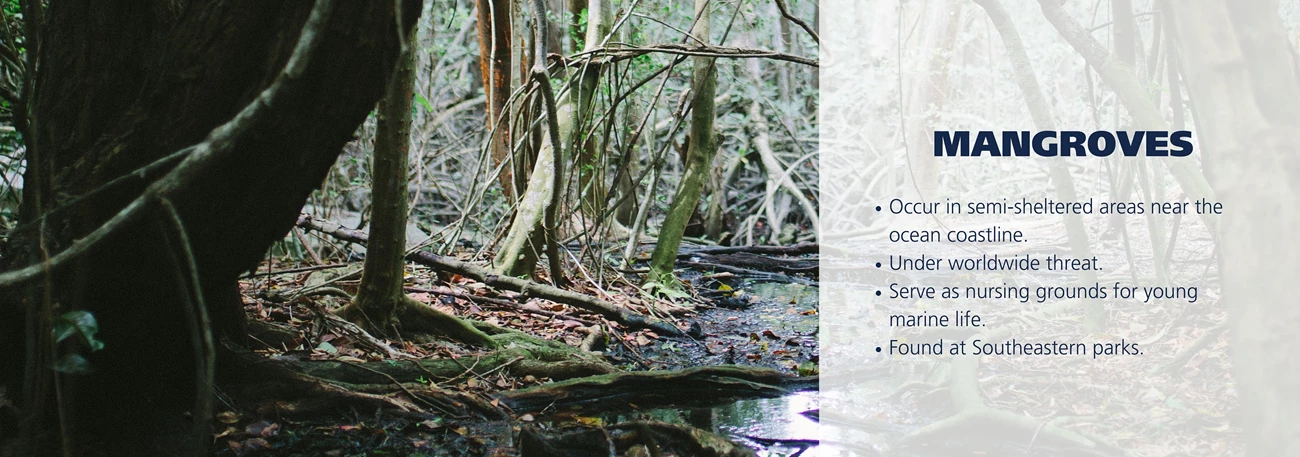
Mangroves are trees and shrubs that perch on the water with their stilt-like prop roots. Mangroves grow on the coastal margins where land meets water. They are uniquely adapted to low-oxygen soils and brackish waters inundated with salt water during high tides - conditions that would kill other trees. However, since the 80 known species of mangroves cannot tolerate freezing temperatures, they grow only in tropical and subtropical regions of the world. The long roots of mangroves hold sediments in place, slow the pace of water, prevent erosion, and stabilize the coastline. Mangroves also provide habitat for many species of fish, crabs, sponges, corals and oysters that find protection from predators or places to grow among the roots. Above in the leafy canopy, shorebirds frequently populate the forest during nesting season and throughout the year. Mangrove forests also are known as “carbon sinks.” Like inland forests, mangrove forests hold carbon that would otherwise be released into the atmosphere and contribute to climate change. Despite their many benefits to our coasts, mangrove habitats are under threat worldwide. Many mangrove forests have been converted to commercial fish and shrimp farms. In the U.S., parks protect some of our mangrove forests from development but they are still vulnerable to pollution and sea level rise. Destruction of mangrove forests removes wildlife habitat and deprives our fragile coastlines of protection from waves and storms and the many other ecosystem services that mangroves provide. The National Park Service is working to maintain conditions for mangroves to grow and thrive. |
Last updated: May 13, 2016
